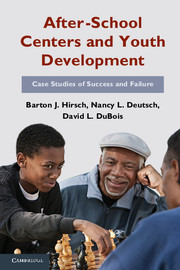References
Published online by Cambridge University Press: 05 June 2012
- Type
- Chapter
- Information
- After-School Centers and Youth DevelopmentCase Studies of Success and Failure, pp. 331 - 350Publisher: Cambridge University PressPrint publication year: 2011

